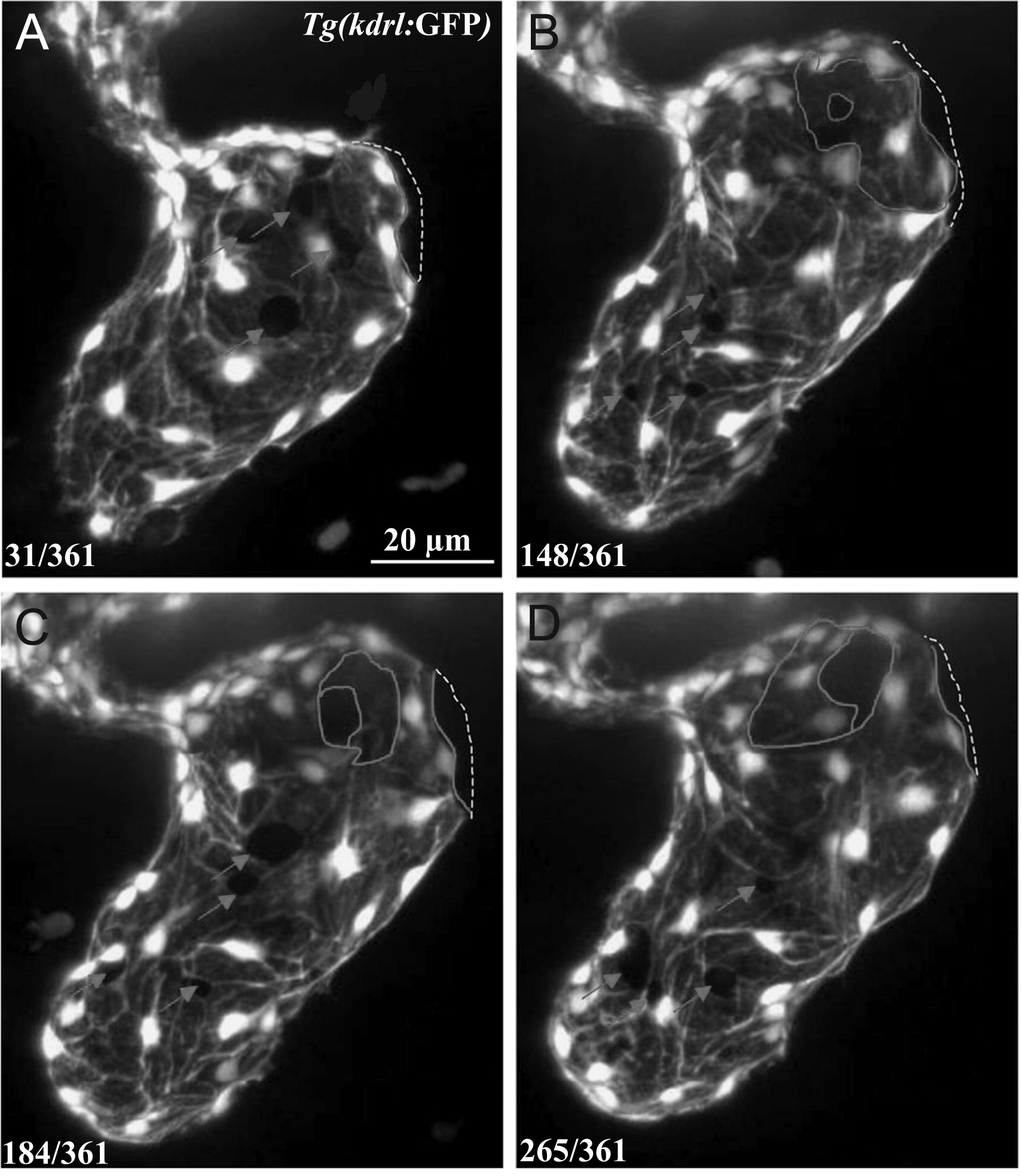Fig. 4 Endocardial cells form gaps during development, with a permanent deficiency manifesting in scote382 mutants. The mutant endocardium forms transient gaps, with a stable and permanent gap developing initially in the outer curvature of the atrium. Stills taken from a time-lapse SPIM movie (Movie S4) of one embryo document dynamic endocardial behavior in a tnnt2 MO injected kdrl:GFP scote382 mutant heart between 36 and 48 hpf. Frame number (n/361) is recorded in the bottom left corner of each panel. Red arrows point to transitory gaps, with gaps contributing to permanent holes outlined in red. In panels B, C and D, the larger outlined gap is in a proximal focal plane, with the smaller gap residing in the far wall of the atrium. Transitory gaps often form at the junction between three cells. Expected boundary of the atrial endocardial layer is indicated by the white dashed line.
Reprinted from Developmental Biology, 372(1), Mellman, K., Huisken, J., Dinsmore, C., Hoppe, C., and Stainier, D.Y., Fibrillin-2b regulates endocardial morphogenesis in zebrafish, 111-119, Copyright (2012) with permission from Elsevier. Full text @ Dev. Biol.

